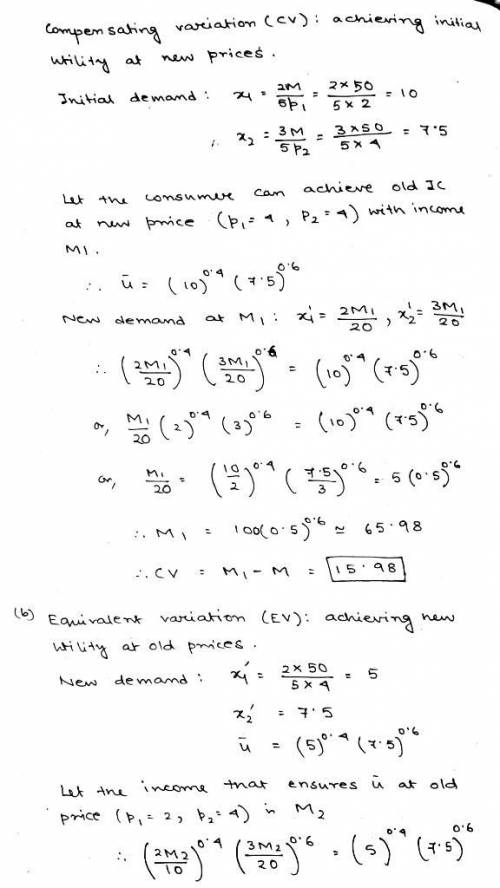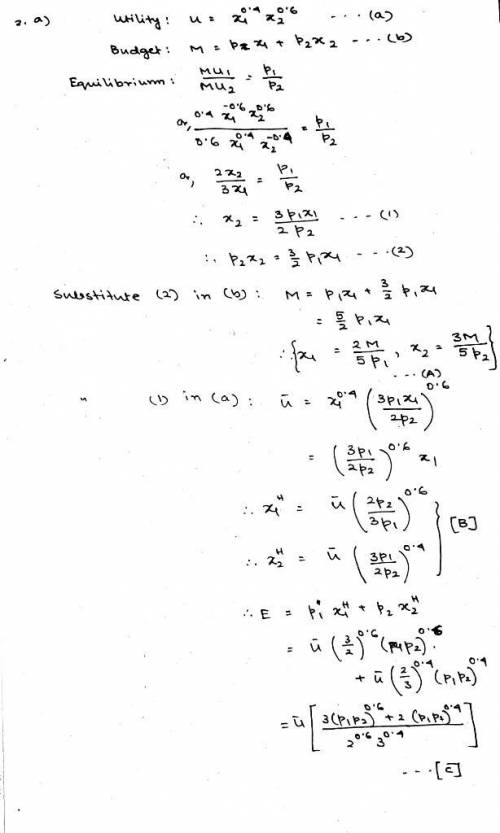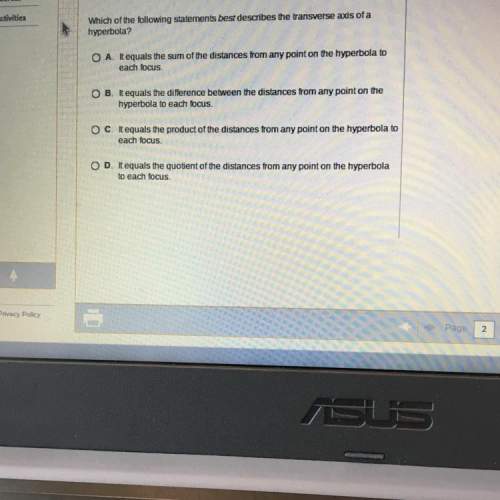
Mathematics, 06.03.2020 07:21 daymakenna3
A consumer’s preference relation ≿ is represented by the quasiconcave utility function: �(�/, �1) = �/ ?.D�1 ?.E She has $50 to spend and prices are �/ = $2 and �1 = $4. Compute the (a) compensating variation, (b) equivalent variation, and (c) the change in consumer surplus associated with an increase in the price of good 1 to $4. You can use any mathematical expression derived in lecture or in previous homework to answer this question.

Answers: 3


Another question on Mathematics

Mathematics, 21.06.2019 15:30
According to statistics a person will devote 32 years to sleeping and watching tv. the number of years sleeping will exceed the number of years watching tv by 18. over a lifetime, how many years will the person spend on each of these activities
Answers: 1

Mathematics, 21.06.2019 18:40
Acircle has a circumference of 28.36 units what is the diameter of the circle
Answers: 2

Mathematics, 21.06.2019 22:30
Olga bought a new skirt that cost $20. sales tax is 5%. how much did olga pay, including sales tax? 7.
Answers: 2

Mathematics, 21.06.2019 23:00
Edger needs 6 cookies and 2 brownies for every 4 plates how many cookies and brownies does he need for 10 plates
Answers: 1
You know the right answer?
A consumer’s preference relation ≿ is represented by the quasiconcave utility function: �(�/, �1) =...
Questions








Computers and Technology, 16.12.2019 22:31











Social Studies, 16.12.2019 22:31







